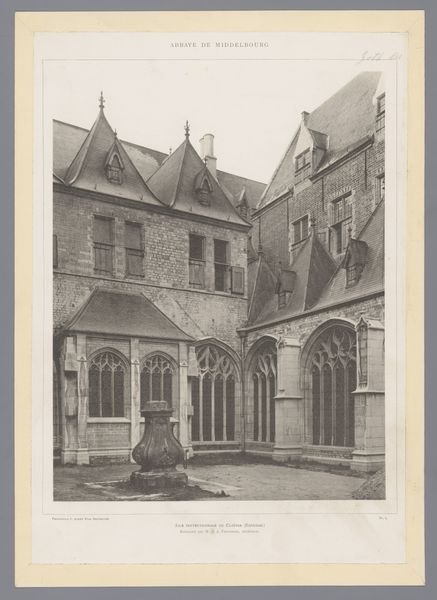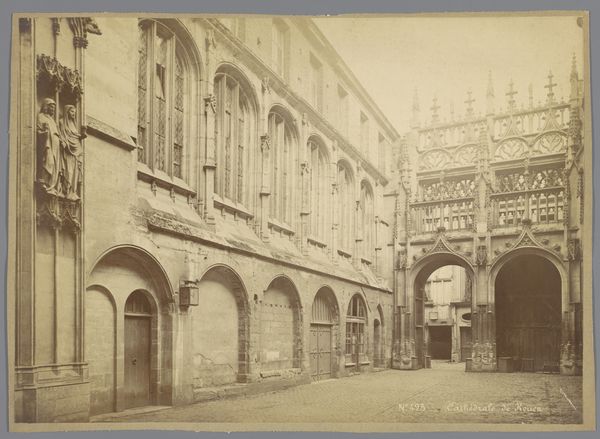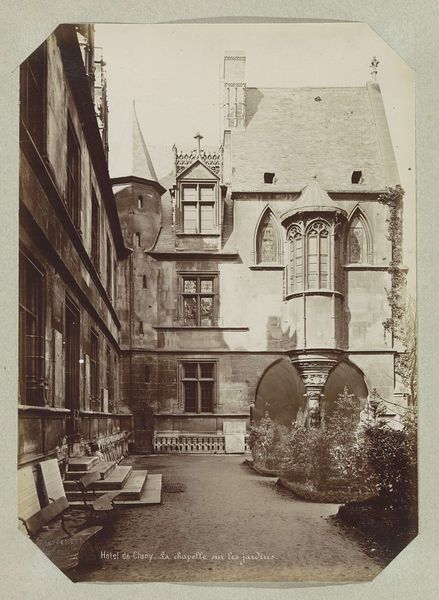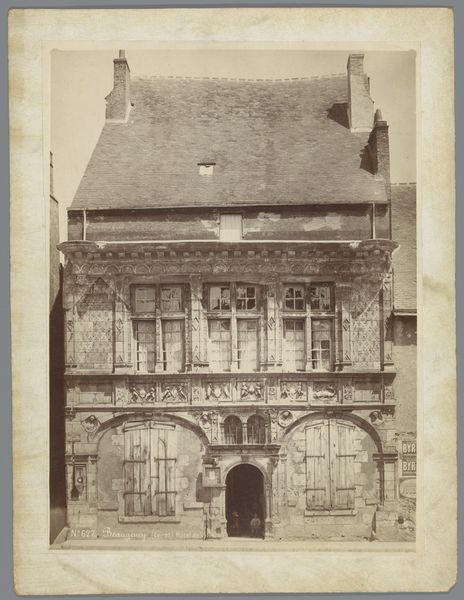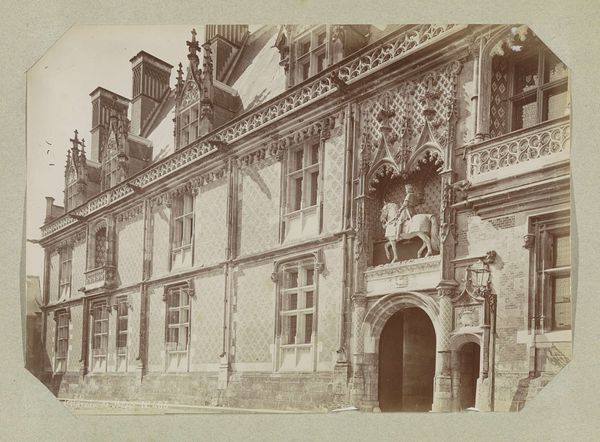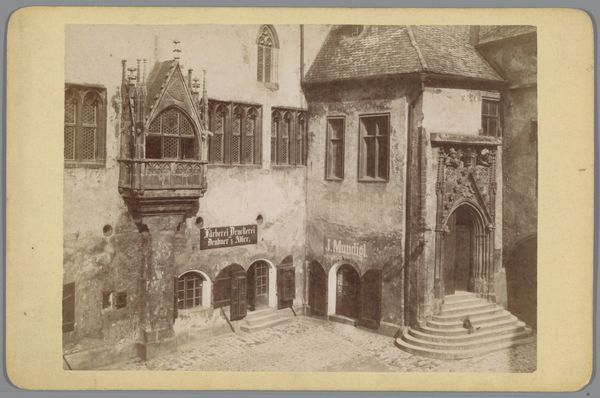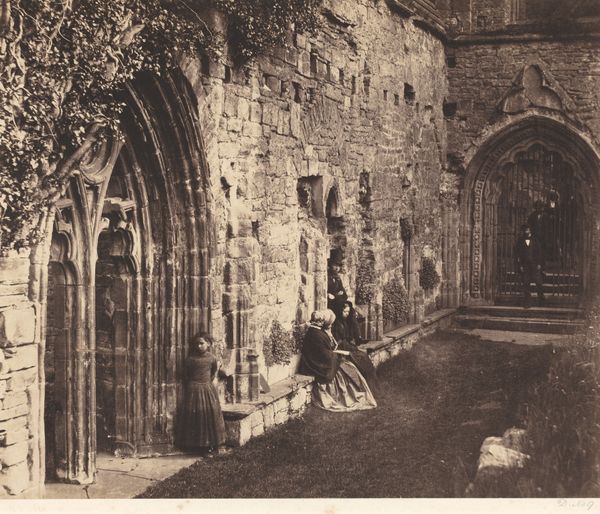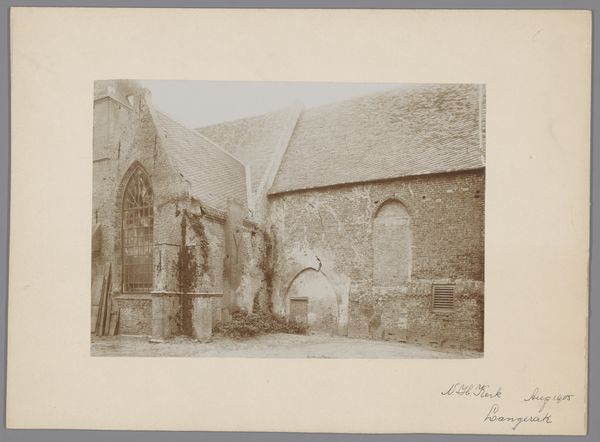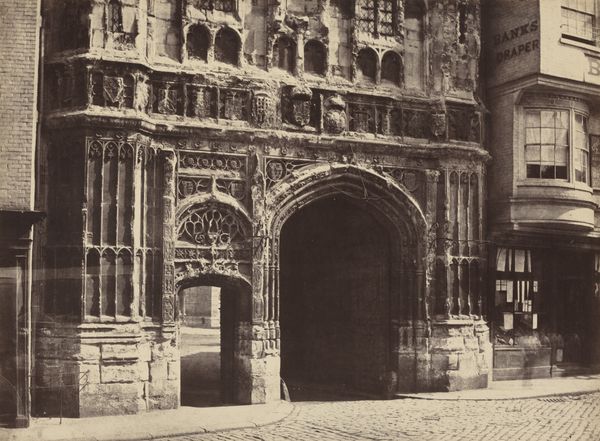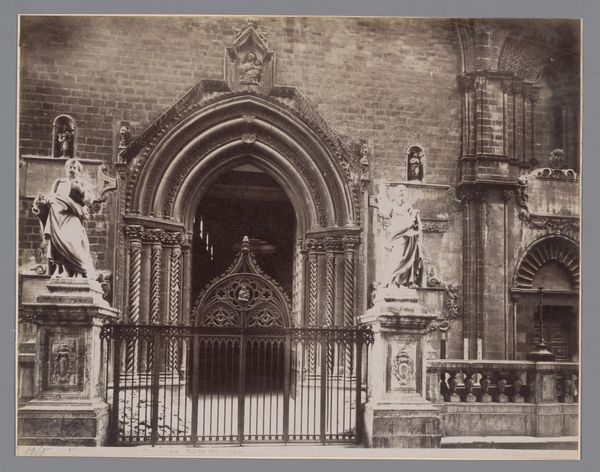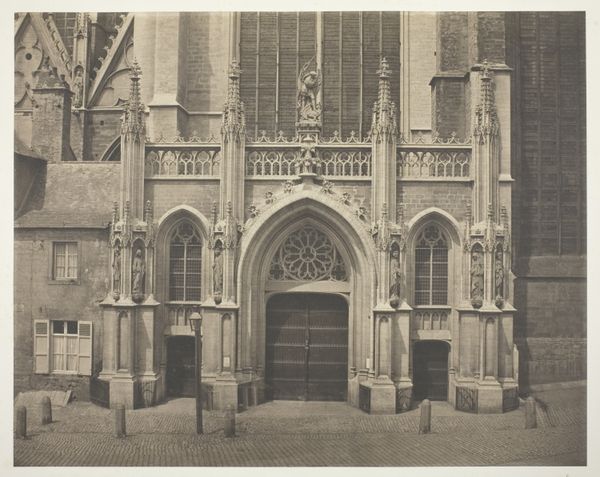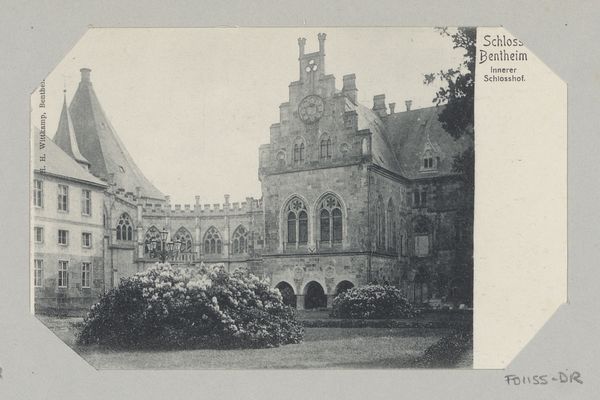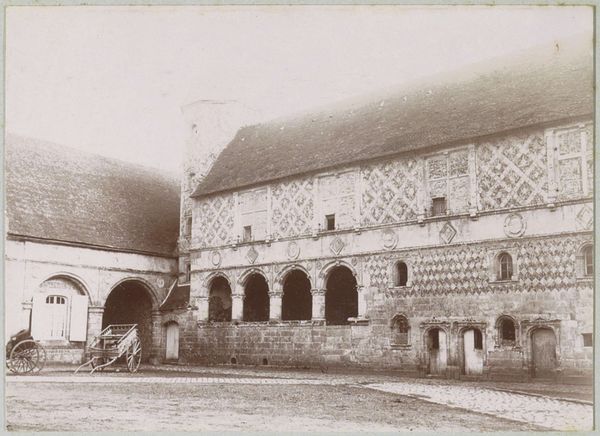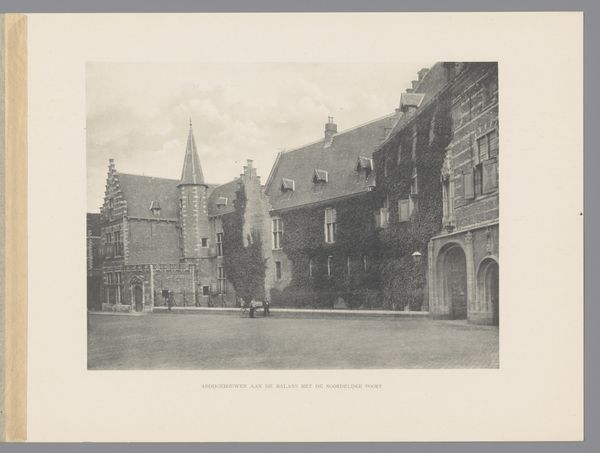
Dimensions: 34.4 × 45.3 cm (image/paper); 51.5 × 69.9 cm (mount)
Copyright: Public Domain
Curator: Here we have a photograph titled "Chapelle du St. Sang à Bruges," created by Bisson Frères around 1854 or 1855. The photographic print captures the Chapel of the Holy Blood in Bruges. Editor: Immediately, I am struck by the almost melancholic stillness. The intricate stonework seems to exude a heavy history, but the photograph's muted tones contribute to a sense of quiet desolation, as though the photograph is holding its breath. Curator: Precisely. Bisson Frères, known for their architectural and landscape photography, demonstrate a mastery of light and shadow here. Note how the stark contrast accentuates the chapel's Gothic details—the pointed arches, the ornate tracery. These visual components create a harmonious visual whole. Editor: But I also think we need to acknowledge that the rise of architectural photography was happening alongside of complex political issues regarding architectural preservation. It was bound up in issues of power and history, colonialism, nationalism. Bisson Frères weren’t just capturing forms; they were capturing contested representations. How did they decide to position their camera, what to show, what to leave out? Curator: That's a valid point. However, consider the formal elements within the frame. The symmetry is carefully controlled, the composition balanced. These qualities speak to an artistic intention beyond mere documentation. The Bisson Frères create a visual narrative centered on aesthetic and philosophical ideals, presenting a clear vision of 19th century Romanticism through light, form and structure. Editor: The play of light may also underscore existing societal structures and inequalities inherent in access to such sacred spaces, the limitations around who can access these forms of symbolic power. These photographic choices, albeit beautiful, solidify cultural hierarchies, especially when framed within the expansionist project of photography itself. Curator: A compelling perspective. Ultimately, however, by studying the textures and structural form we start to decipher and access Bisson Frères’ method. We can observe, too, their meticulous construction of space through tonality and shape. Editor: Right, while simultaneously questioning what those tonal arrangements and constructed spaces tell us about the political and cultural landscape in which it was created. Curator: A negotiation, then, between visual language and social context. Editor: Indeed. It enriches our comprehension.
Comments
No comments
Be the first to comment and join the conversation on the ultimate creative platform.
